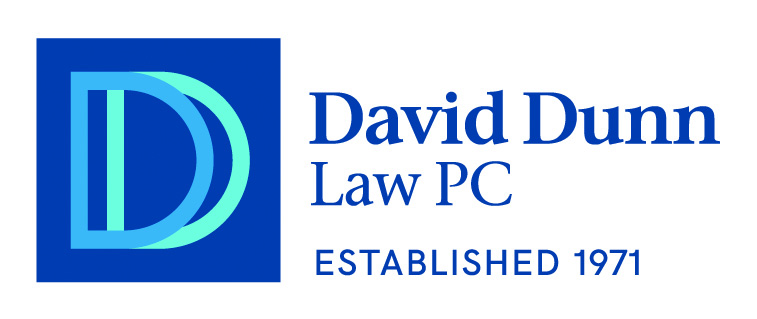
What is Bankruptcy for Individuals?
- Chapter 13. This is called: “adjustment of the debts of individuals with regular income.”
-
- Only individuals are eligible for chapter 13, not corporations or partnerships.
-
- The debt limit in chapter 13 is as follows:
-
-
- Secured debt $1,257,850 [1]
-
-
-
- Unsecured debt $ 419,275 [2]
-
[1] Secured debt is debt that has a lien on particular assets. Most of the time the lien is based on a contract, such as a home mortgage or a car loan. Some liens, like taxes, are hidden, and are based on a statute. For example, under state law, the unpaid real estate taxes on your home (if you are a homeowner) have a lien that is even higher than the lien of the first mortgage. If you have a secured debt, and don’t pay, they can come and take it away, by foreclosure, repossession, tax sale. [2] Unsecured debts are those not protected by a lien, such as credit cards, utility charges, and unpaid health care bills.
-
- Under chapter 13, you as the debtor propose a chapter 13 plan that calls for a cure of secured debt that has fallen behind, payment in full of most back taxes (if any) and a dividend for unsecured creditors.
-
- The standing chapter 13 trustee gets a commission, as a percentage of the money you pay into your plan.
-
- You get the money for a chapter 13 plan by living on a stringent budget for at least 36 months.
-
-
- You must contribute 36 times your disposable income to your plan.
-
-
-
- You can stay longer in chapter 13 for up to 60 months, if you need more time to pay the arrearages.
-
-
- The typical chapter 13 case involves a mortgage that has fallen behind, where the homeowner can resume payments, but where the lender wants a lump sum that the homeowner cannot pay all at once.
-
- If chapter 13 applies to your situation, we will provide you with an animated PowerPoint ® slide presentation that adds details. Under chapter 13, the creditors do not vote, but the standing chapter 13 trustee will monitor your case closely.
-
- The trustee’s approval is almost always required to get your plan confirmed by the Court. Once confirmed, your plan becomes binding on you and all your creditors.
-
- IF YOUR CURRENT MONTHLY INCOME IS ABOVE THE MEDIAN INCOME IN YOUR STATE FOR A HOUSEHOLD OF YOUR FAMILY’S SIZE, THEN THE “APPLICABLE COMMITMENT PERIOD” IS 60 MONTHS. THIS IS MANDATORY. ALSO, YOUR DISPOSABLE INCOME IS DETERMINED BY THE MECHANICAL (ARTIFICIAL) CALCULATION OF THE MEANS TEST, NOT BY THE ACTUAL DOLLAR AMOUNTS IN YOUR BUDGET.
-
- WE ANTICIPATE SUBSTANTIAL LITIGATION OVER THE “ARTIFICIAL” DETERMINATION OF DISPOSABLE INCOME BEFORE ALL ISSUES ARE FULLY RESOLVED.
- Chapter 12: This is called: “adjustment of the debts of a family farmer with regular annual income.” This is rare, and will be explained in detail, if you live on a farm that you own, and need to consider bankruptcy. Chapter 12 works in many ways similar to the methods applicable to chapter 13.
- Chapter 7. This is called “liquidation.” Most of the changes made by the 2005 bankruptcy law apply to your eligibility to be a debtor under chapter 7.
-
- In a chapter 7 case, you do not propose to pay anyone. You propose to keep all your things, or as much as you are allowed under your “exemption,” and just flush the creditors away.
-
- If you have more property than the “exemption” allows, you might want to consider chapter 13.
-
- If you have too much cash left after deducting your actual living expenses, the trustee or the Department of Justice, or any creditor could ask the court to throw out your bankruptcy case. Once again, you may wish to consider chapter 13.
-
- It is our job to help you navigate these waters, and come to the best possible decision for you and your loved one.
-
- Sometimes, in a chapter 7 case, you will have a mortgage or a car loan. These are typical “Secured debts.”[1] The new law gives you a limited amount of time to make up your mind if you are going to keep the asset. If you do decide to keep it, you are well advised to enter into a written “reaffirmation” agreement with the creditor. The reaffirmation agreement says, in very elaborate language, that you are going to pay that particular creditor in spite of the bankruptcy. There are rules about reaffirmation agreements. You will see that Congress has put in some language to protect you from being bullied into a reaffirmation.
In any chapter in bankruptcy, an individual gets an “exemption,” a certain amount of property that you can keep away from creditors. In Pennsylvania, you can use the state or the federal exemption. The federal exemption is more generous, so it is used most of the time in Pennsylvania.[1] You will see the exemptions in our proprietary PowerPoint® presentation. Most chapter 7 cases are “no-asset” cases, meaning that there is no money for creditors, and that you will get to keep all your things. In case you lose your copy of our PowerPoint, here is a list. In a joint case, the husband gets a full set of exemptions, and so does the wife. The limit on the exemption is the “equity” in the asset. For example, if your car is worth $10,000, and the balance on your car loan is $9,000, you have equity in the car of $1,000. That part of the car’s value is exempt.
[1] There are rare occasions on which the Pennsylvania exemption is better suited to a client’ situation... We will advise you accordingly.
| Asset Type | Equity in Asset, Limit on Exemption |
| Property Used as a Residence | $25,150 |
| One Motor Vehicle | $4,000 |
| Household Goods, Per Item | $625 |
| Entire Household | $13,400 |
| Jewelry | $1,700 |
| Any Asset | $1,325 |
| Unused Amount of Exemption on Residence | $12,575 |
| Tools of the Trade | $2,525 |
| Life Insurance Policy | Retain Ownership |
| Cash Value of Life Insurance Policy | $13,400 |
| Professionally prescribed health aids | No Dollar Limit |
| Unemployment Compensation
Veterans Benefit, Disability Illness or Unemployment Benefit |
To the extent needed to reasonably support debtor or an dependent of the debtor |
| Alimony and Other Family Support | To the extent needed to reasonably support debtor or an dependent of the debtor |
| Stock Bonus, Pension, Profit Sharing Plans (with limited exceptions) | To the extent needed to reasonably support debtor or an dependent of the debtor |
| IRA Funds | $1,362,800 |
| Crime Victim Compensation Award | To the extent needed to reasonably support debtor or an dependent of the debtor |
| Wrongful Death Award | To the extent needed to reasonably support debtor or an dependent of the debtor |
| Life Insurance Proceeds | To the extent needed to reasonably support debtor or an dependent of the debtor |
| Personal Injury Award | $25,150 |
| Lost Earning Capacity Due to Personal Injury | To the extent needed to reasonably support debtor or an dependent of the debtor |
This is the federal exemption. Some states have opted to provide their own exemptions, and not to use the federal exemption. [1]
The object of a bankruptcy is to get a “discharge.” A discharge is an order of the Court that says you are absolved of your debts
[1] Dollar amounts get a cost of living increase every 3 years. The next increase will be April 1, 2019.
Bankruptcy for Individuals!
Debt Relief Agency! We help people file bankruptcy.
Please see on right a slides explain how our office process and deals the situation for individual cases before filling for bankruptcy.
As each case are unique may differ from slides, but general process are the same.
Questions?
After your view our related slide show, use our “Contact Us” utility on this website; or askdave@daviddunnlaw.com; or just give us a call. We can help. 610-972-2494.
